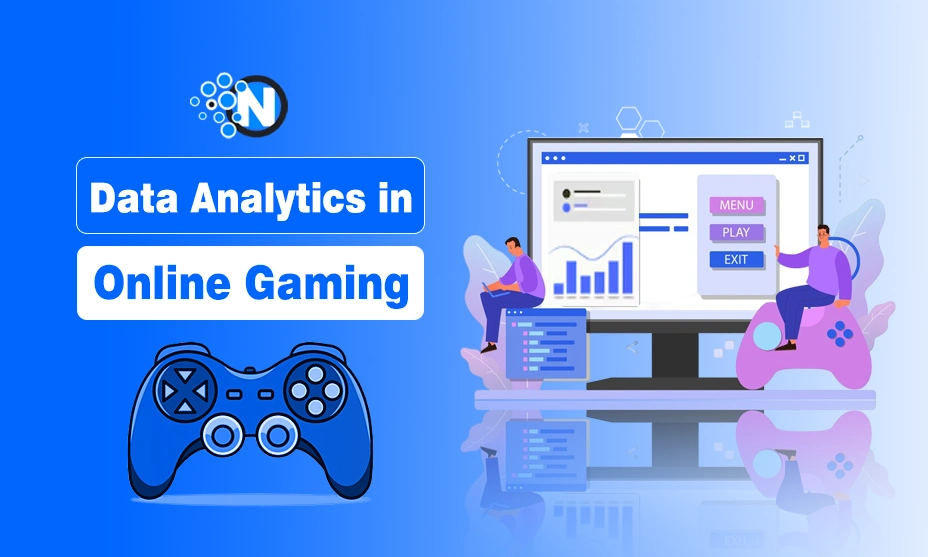The Role of Data Analytics in Personalizing User Experience in Online Gaming

In the fast-growing era of online gaming, data analytics has been one of the core strategies that developers are using to ensure maximum satisfaction of players. Developers can use collected and analyzed gaming-related information to make decisions that have a great impact on the gaming experience.
This is done by monitoring a large set of metrics, including session duration, player retention rate, in-game manners, and purchase behavior.
In this blog post, I am going to explain the role of data analytics in personalizing user experience in online gaming.
Let’s begin!
The Intersection of Gaming and Data Analytics
Gaming is no longer a one-size-fits-all experience. Thanks to big data and analytics, developers now understand individual player behaviors, preferences, and habits. Moreover, games can adjust the difficulty of the challenge based on a player’s performance and skill, ensuring a more engaging and rewarding experience.
Data analytics allows gaming companies to create dynamic gaming experiences customized for each player. From adjusting difficulty levels to suggesting in-game purchases, data analytics plays a vital role in shaping personalized user experiences.
Personalization is key to ensuring that players remain engaged and immersed in a game. Whether it’s tailoring the storyline based on past decisions or adjusting multiplayer matchmaking algorithms, data analytics is revolutionizing how games adapt to individual users.

Implementing Data Analytics in Online Gaming
Data analytics works by collecting, processing, and analyzing large sets of gaming data. This data comes from a variety of sources, including player behavior, in-game purchases, social interactions, and performance metrics.
Data Collection and Analysis
The first action that can be taken to utilize data analytics in gaming is to collect extensive gameplay data. Advanced tools and algorithms analyze this data and detect the patterns that may escape our attention initially. For instance, developers can set the most engaging levels or options, as well as what may be pushing players out of the game.
Role of Real-Time Analytics
Real-time data analytics changes the interaction of the developers with the players because they can change the character of the game environment in real time depending on the activity level of the player. Such flexibility supports user engagement by the in-game difficulty level changes in real time, content specific to a user, or punts churn risk at the earliest possible moment before resulting in a player leaving.
Case Study – Yabby Casino
An excellent example of the effective use of data analytics in the online gaming industry is seen with Yabby Casino. It offers a wide range of games tailored to the Australian audience and employs data analysis to hone and personalize the gaming experience.
Yabby Casino monitors user engagement on various titles and assists in determining what games are most preferred by particular segments of users. The data collected enables Yabby Casino to deliver more of what users prefer, hence improving user satisfaction and retention. Also, Yabby Casino analyzes player data to enhance customer support and offer a prompt and customized service.
Predictive Analytics
Beyond real-time adjustments, predictive analytics allows developers to foresee future trends and player needs. This proactive approach ensures that the gaming platforms remain engaging and relevant for gamers.
Privacy and Ethical Considerations
While data analytics in gaming has immense benefits, it also comes with responsibilities. Ensuring player data privacy and adhering to ethical standards is paramount.
Platforms like Yabby Casino react to and anticipate player needs through data analytics, crafting profoundly engaging and personalized gaming experiences.
Practical Applications of Data Analytics in Enhancing User Experience
Data analysis can be an incredible resource in the gaming industry, both as a way to understand what drives players and as a way to actively enhance the user experience. Developers can craft a more engaging and personalized gaming experience through insights derived from data analysis.
Here I will look at the actual applications of such analysis and how they are translated into tangible experience enhancements:
Personalization of Game Content
One of the most direct applications of data analytics in online gaming is the personalization of content. By analyzing individual player data, games can dynamically adjust challenges and rewards to suit each player’s skill level and preferences. For example, if data shows that a player enjoys specific game missions, the game might offer them more missions to keep them engaged longer.
Optimization of In-Game Offers
Data analytics also allows developers to optimize in-game offers such as purchases, upgrades, and special deals. By understanding what games players tend to buy at a particular game point, developers can offer items crafted to maximize conversion rates and revenue. This type of targeted offering allows players to see offers that match their specific game context and thus make them more likely to buy.
Enhancing Social Interaction
Multiplayer games use data analytics to improve social interactions within the game. By observing what players bond with and how they interact, games can recommend groups and guilds, facilitate matched interactions, and help build communities that retain players. Authentic social features can potentially enhance the user experience, bringing a game’s community to life and making it more interactive.
Improving Customer Support
Leveraging data analytics extends beyond the game content to improving customer support services. Analyzing common issues and player feedback helps support teams anticipate problems and offer quicker, more effective solutions. For example, suppose many users are struggling with a particular level. In that case, analytics can prompt a targeted tutorial or guide to help overcome these challenges, thereby reducing frustration and support calls.
Reducing Churn through Predictive Analytics
Predictive analytics can predict when players are likely to leave the gamе and prescribe interventions to prevent churn. Through the identification of the at-risk players, mainly from the interaction pattern, developers can play a leading role by actively approaching such players with customized offers, tips, or other retention mechanics. It helps in optimizing the gaming experience and retaining their interests.
Summing Up
In general, business applications of analytics in gaming are extensive and diverse. They range from optimizing game personalization to improving elements of gaming platforms. All of them promote a richer and more engaging experience for the users and facilitate operational efficacy and profitability of the gaming business. Utilizing data in this strategic manner enhances the gamers’ experiences to be enjoyable, memorable, and tailored to their choice and satisfaction and, in turn, boosts satisfaction and loyalty.




